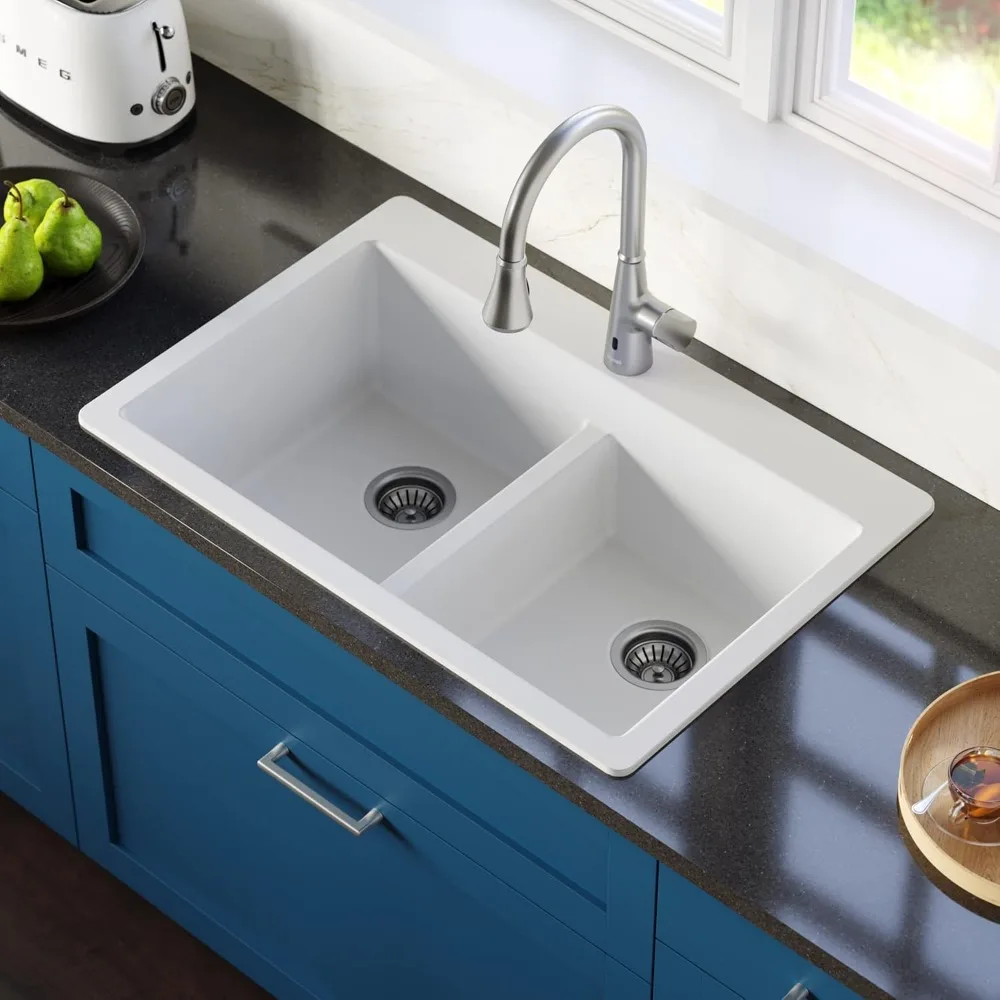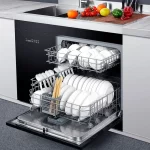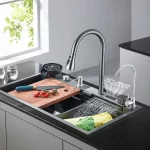Choosing the right kitchen sink material is essential for both functionality and aesthetics in your kitchen. With various materials available, each offering unique benefits and drawbacks, it can be challenging to determine which one best suits your needs. This comprehensive guide explores the pros and cons of popular kitchen sink materials to help you make an informed decision for your kitchen.
Stainless Steel Sinks
Advantages of Stainless Steel Sinks
Stainless steel is one of the most popular materials for kitchen sinks due to its durability and versatility. One of the primary advantages of stainless steel sinks is their resistance to corrosion and staining. Made from a mix of iron, chromium, and nickel, stainless steel sinks can withstand the harsh conditions of daily kitchen use without rusting or developing spots. This makes them an excellent choice for busy kitchens where spills and splashes are frequent.
Additionally, stainless steel sinks are known for their ease of maintenance. The non-porous surface of stainless steel is relatively simple to clean; most stains and residues can be removed with just a damp cloth and mild detergent. The material’s reflective surface also adds a modern, sleek look to the kitchen, enhancing its overall aesthetic appeal. Furthermore, stainless steel sinks are available in a variety of styles and sizes, including undermount, drop-in, and farmhouse options, making them versatile enough to fit any kitchen design.
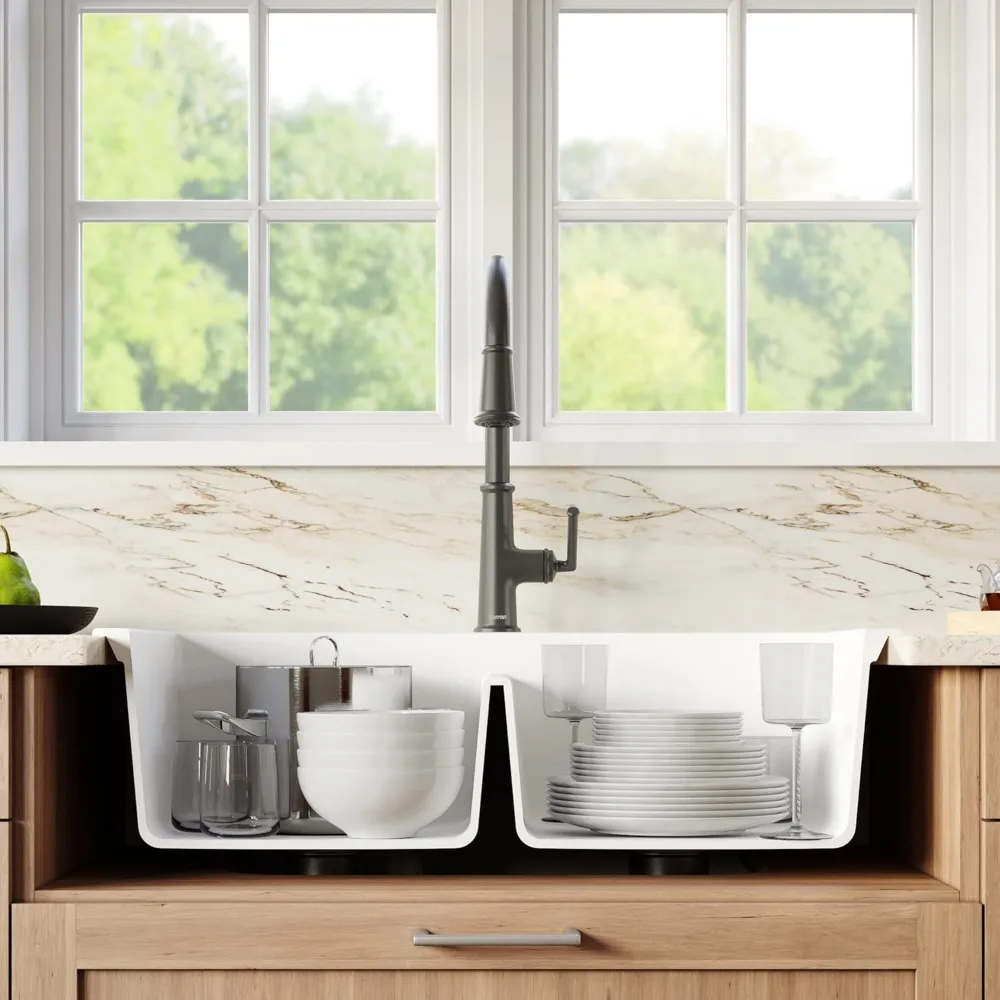
Disadvantages of Stainless Steel Sinks
Despite their many advantages, stainless steel sinks have some drawbacks. One significant issue is their tendency to show scratches and dents over time. Although these marks are usually not deeply visible, they can become more noticeable with heavy use or the impact of sharp objects. Additionally, while stainless steel is resistant to rust, it is not entirely immune to it. Prolonged exposure to water and harsh cleaning agents can potentially lead to minor rusting if the protective finish is damaged.
Another drawback is that stainless steel sinks can be noisy. The metal’s tendency to reverberate sounds from running water and dishes can be a concern in a busy kitchen environment. While some manufacturers address this issue with sound-dampening pads, it is still something to consider when selecting a sink material.
Cast Iron Sinks
Advantages of Cast Iron Sinks
Cast iron sinks are renowned for their durability and classic aesthetic. Coated with a porcelain enamel finish, these sinks offer a high level of resistance to scratches, stains, and heat. The enamel coating not only provides a smooth and glossy surface but also enhances the sink’s ability to resist chipping and fading, making it a long-lasting investment for your kitchen.
The substantial weight of cast iron sinks contributes to their stability, making them less likely to shift or move once installed. This weight also adds a sense of solidity and quality to the sink, complementing traditional or vintage kitchen designs. Furthermore, cast iron sinks are available in a wide range of colors and styles, allowing you to choose a sink that perfectly matches your kitchen’s decor.
Disadvantages of Cast Iron Sinks
However, cast iron sinks come with their own set of challenges. The primary disadvantage is their weight. Cast iron sinks are considerably heavier than other sink materials, which can make installation more complex and require additional support. This heaviness can also pose a problem if you are remodeling and need to transport the sink to a different location.
Another issue is the potential for enamel chipping. While the porcelain coating is designed to resist damage, it can still chip or crack if subjected to heavy impacts. Once chipped, the exposed cast iron is prone to rust, which can lead to further deterioration if not addressed promptly. Additionally, cast iron sinks require regular maintenance to keep their enamel coating in good condition, which may involve specific cleaning products to avoid damaging the finish.
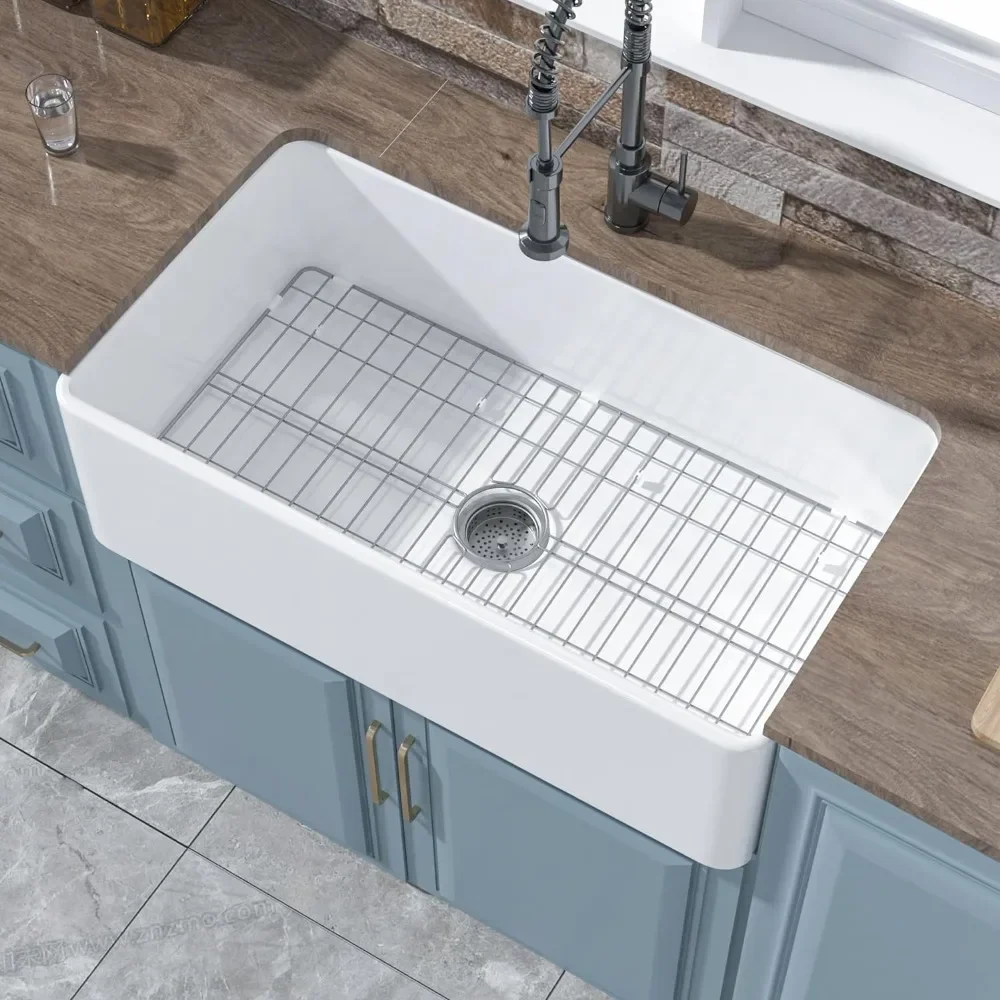
Composite Sinks
Advantages of Composite Sinks
Composite sinks are made from a blend of materials, typically acrylic resins and crushed stone or quartz. These sinks are known for their strength and durability, offering a robust alternative to traditional materials. One of the main benefits of composite sinks is their resistance to scratches, stains, and impacts. The material’s non-porous surface prevents the absorption of liquids, making it highly resistant to staining and easy to clean.
Composite sinks also provide a high level of aesthetic versatility. Available in a variety of colors and textures, they can mimic the appearance of natural stone while maintaining a lower price point. This material can complement modern and contemporary kitchen designs with its sleek appearance and range of finish options. Furthermore, composite sinks are less noisy than stainless steel sinks, as their dense material helps dampen the sound of running water and dishes.
Disadvantages of Composite Sinks
Despite their many advantages, composite sinks have a few drawbacks. One issue is their susceptibility to discoloration over time, especially if exposed to harsh chemicals or frequent use of certain cleaning products. Although the material is designed to resist stains, it may gradually lose its luster and require periodic maintenance to restore its original appearance.
Additionally, composite sinks can be prone to surface scratching, particularly if abrasive cleaning tools or harsh scrubbing are used. While minor scratches can often be polished out, deeper ones may require professional repair. The initial cost of composite sinks can also be higher than other materials, which may be a consideration for those on a tighter budget.
Fireclay Sinks
Advantages of Fireclay Sinks
Fireclay sinks are crafted from clay and fired at high temperatures, resulting in a dense and durable material. One of the most significant advantages of fireclay sinks is their resistance to heat and stains. The high firing temperature gives the sink its strength and non-porous quality, allowing it to withstand high temperatures without damage and resist staining from common kitchen substances.
Fireclay sinks also offer a distinctive, classic look that enhances traditional or farmhouse-style kitchens. Their glossy finish and crisp lines contribute to a clean and elegant appearance. The durability of fireclay means that these sinks can maintain their pristine condition for many years, making them a worthwhile investment for homeowners seeking a long-lasting sink solution.
Disadvantages of Fireclay Sinks
However, fireclay sinks are not without their drawbacks. One notable issue is their weight, which can be comparable to cast iron sinks. The heaviness of fireclay can complicate installation and may require additional support or reinforcement. Additionally, while fireclay is highly resistant to staining, it can be prone to chipping if subjected to heavy impacts or dropped objects.
Another concern is the cost. Fireclay sinks tend to be more expensive than other materials, which can be a significant factor for budget-conscious consumers. The high cost reflects the material’s durability and craftsmanship but may not be feasible for everyone.
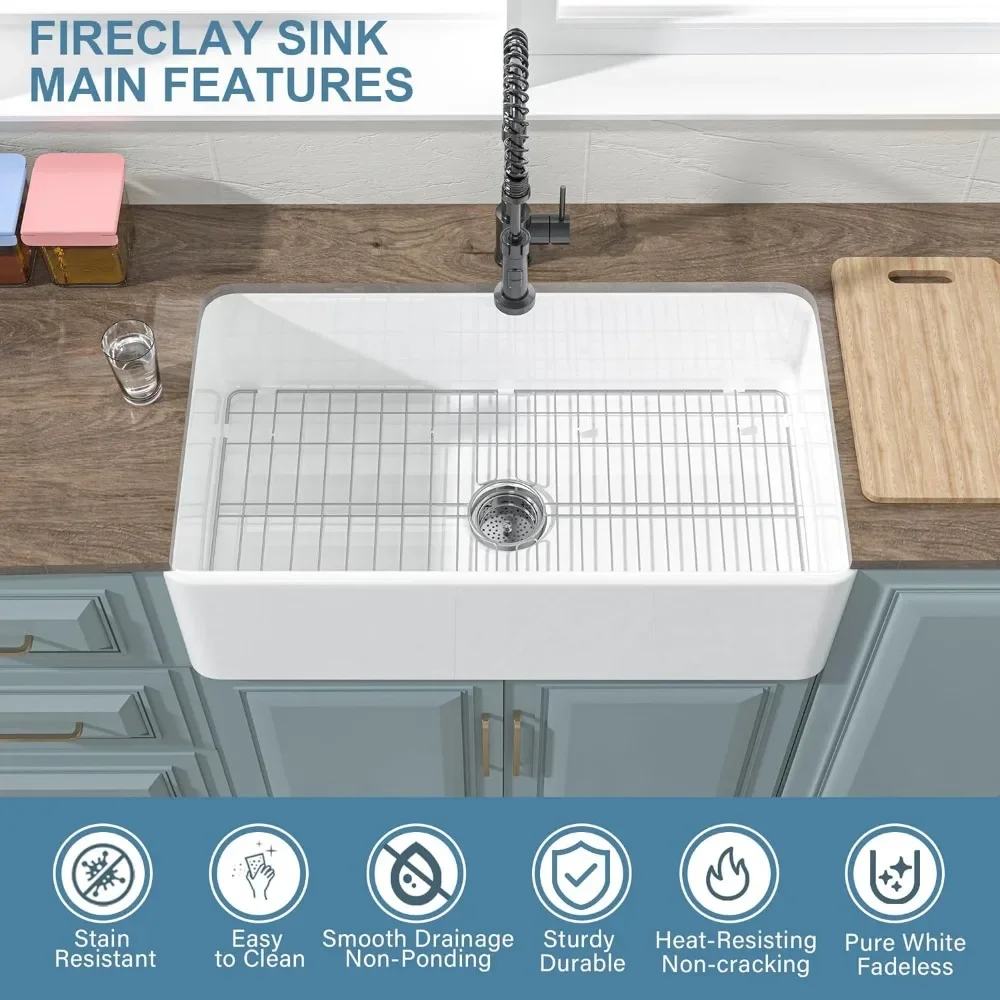
Granite Sinks
Advantages of Granite Sinks
Granite sinks are constructed from a blend of granite stone and acrylic resins, resulting in a material known for its exceptional strength and aesthetic appeal. One of the main benefits of granite sinks is their resistance to scratches and stains. The granite surface is incredibly durable, capable of withstanding the rigors of daily kitchen use without showing signs of wear.
Granite sinks also offer a sophisticated, natural look that can enhance both modern and traditional kitchen designs. The material comes in a variety of colors and patterns, allowing you to select a sink that complements your kitchen’s style. Additionally, granite sinks are relatively low-maintenance, as their non-porous surface prevents the accumulation of bacteria and makes cleaning straightforward.
Disadvantages of Granite Sinks
Despite their advantages, granite sinks have a few drawbacks. The primary concern is their cost, which can be higher compared to other kitchen sink materials. The initial investment for a granite sink may be prohibitive for some homeowners. Additionally, while granite is resistant to scratches and stains, it can be susceptible to chipping if heavy or sharp objects are dropped on it.
Granite sinks can also be quite heavy, which may require additional support during installation. This added weight can complicate the installation process and necessitate professional assistance. While granite sinks design to be durable, their cost and installation requirements may be factors to consider when making your decision.
Conclusion
Making the Right Choice
Selecting the right kitchen sink material involves evaluating your needs, preferences, and budget. Each material offers distinct advantages and disadvantages, and understanding these can help you make an informed decision. Stainless steel provides durability and modern appeal, cast iron offers classic charm and resilience, and composite materials combine strength with aesthetic versatility. Fireclay and granite sinks offer premium durability and style, while acrylic sinks
